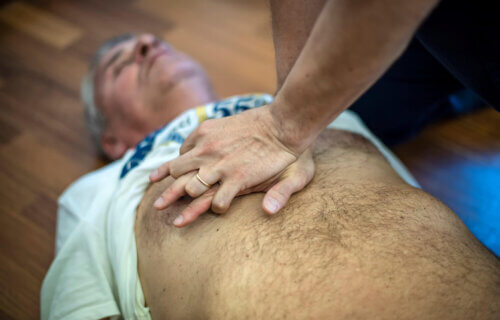NEW YORK — We’ve all heard about apparent near-death experiences like seeing a great white light. Now, fascinating new research indicates “lucid death” is actually very common among surviving cardiac arrest patients who were given cardiopulmonary resuscitation (CPR) while seemingly unconscious and near-death.
Scientists at the NYU Grossman School of Medicine report one in five CPR survivors may “describe lucid experiences of death” post-recovery. Moreover, rhythmic brain waves recorded during these heart emergencies suggest there really is substance to subjects’ claims.
This project encompassed 567 men and women whose hearts stopped beating while hospitalized, and who received CPR between May 2017 and March 2020. Subjects were gathered from both the U.S. and the U.K. Unfortunately, despite immediate treatment, less than 10 percent recovered well enough to be discharged from the hospital.
What did patients experience during their near-death moments? Survivors described unique lucid death experiences to the research team, such as a perceived separation from one’s body or observing events without pain or distress. Other even reported something that sounds similar to the “my life flashed before my eyes” trope: A meaningful evaluation of their life, including their actions, intentions, and thoughts toward others.
Importantly, study authors stress that as far as they can tell, these experiences were not simple hallucinations, delusions, illusions, dreams or CPR-induced consciousness.
What ‘lucid death’ looks like in the brain
When study authors tested for hidden brain activity, they noted several spikes including gamma, delta, theta, alpha and beta waves up to an hour into CPR. Some of those brain waves are usually seen when people are conscious and engaging in higher mental functions, such as thinking, memory retrieval, and conscious perception.
“These recalled experiences and brain wave changes may be the first signs of the so-called near-death experience, and we have captured them for the first time in a large study,” says lead study investigator Dr. Sam Parnia, an intensive care physician and an associate professor in the Department of Medicine at NYU Langone Health, in a statement. Parnia is also the organization’s director of critical care and resuscitation research.
Dr. Parnia adds that these recorded, measurable electrical signs of lucid and heightened brain activity, in combination with patients’ reported near-death experiences, suggest human consciousness and “the self” may not stop completely at time of death.
“Our results offer evidence that while on the brink of death and in a coma, people undergo a unique inner conscious experience, including awareness without distress,” he adds.“These lucid experiences cannot be considered a trick of a disordered or dying brain, but rather a unique human experience that emerges on the brink death. As the brain is shutting down, many of its natural braking systems are released. Known as disinhibition, this provides access to the depths of a person’s consciousness, including stored memories, thoughts from early childhood to death, and other aspects of reality. While no one knows the evolutionary purpose of this phenomenon, it clearly reveals intriguing questions about human consciousness, even at death.”
In conclusion, study authors explain that while modern science has thus far been unable to definitively prove the reality or meaning of patients’ reported near-death experiences and claims of awareness, it has also been impossible to disprove such claims either. All in all, the research team believes near-death experiences certainly merit more empirical investigation without prejudice.
A total of 25 hospitals in the U.S. and UK took part in this study. Only hospitalized patients were enrolled in order to standardize the CPR and resuscitation methods used in the event of cardiac arrest, as well as the brain activity recordings. Further testimonies were also collected from 126 community survivors of cardiac arrest with self-reported memories. These additional experiences provided further insight into themes related to the recalled experience of death.
Dr. Parnia posits further research is needed to precisely define the exact biomarkers of what exactly constitutes “clinical consciousness” and the human recalled experience of death, as well as to monitor the long-term psychological effects of resuscitation following cardiac arrest.
The study is published in Circulation and was presented at the American Heart Association’s 2022 Scientific Sessions conference.

Dr. Parnia’s book is available below:
